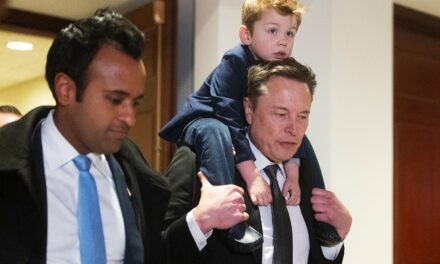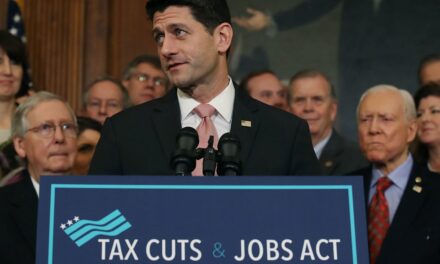We support our Publishers and Content Creators. You can view this story on their website by CLICKING HERE.
When I was a teenager, the sleek, uber-cool Jaguars featured in movies like “The Italian Job” and “Die Another Day” were the epitome of dream cars. Today, when I can finally afford such a vehicle (and happen to be in the market for a new car) Jaguar just removed itself from my consideration list.
True, I am an anecdote of one. But I’m also a branding professional who’s shaking his head at the recklessness of Jaguar’s new brand campaign. And judging from the reaction on social media, I’m not the only one.
What do they think they’re doing with one of the world’s most storied brands? Repositioning it, according to managing director Rawdon Glover.
“We need to re-establish our brand and at a completely different price point so we need to act differently,” he told the Financial Times. “We wanted to move away from traditional automotive stereotypes.”
Fair enough.
But there’s a reason stereotypes become stereotypes, particularly in branding. People expect luxury sports car branding from a luxury sports car company—not a tone-deaf homage to DEI dreamworld.
Sure, Jaguar must introduce itself to a new generation. All brands do from time to time. But it’s not the first automaker to be faced with such a task, and it could learn from its forebears.
Imagine what it would have been like 20-some years ago to walk into an imposing boardroom at General Motors and propose to its management team that the company associate its premier brand, beloved by the Silent Generation, with the long-haired, rebellious rock-and-roll of Led Zeppelin.
In the 1970s or 1980s, you would have been thrown out mid-pitch. But by the turn of the century, Cadillac’s customer base was aging out and Led Zeppelin fans had grown up, gotten jobs, had kids of their own, and possessed significant disposable income. They had become good prospective Cadillac buyers, if the brand could make itself relevant to them.
The brass at GM wisely recognized the opportunity and embarked on a massive redesign of the Cadillac fleet, giving its vehicles sleek new lines and supercharged engines. The corresponding branding redesign had to be just as daring and consequential. And the branding team was up to the task.
Premiering during the 2003 Super Bowl broadcast, Cadillac’s Breakthrough commercial was, in fact, a breakthrough. It wasn’t targeted to the brand’s historical customer base, but neither did it offend them. The rebranding caught the attention of the up-and-coming generation with a then 30-year-old anthem of their youth which had retained just enough of its edge to announce to the world that here was something different.
And it worked.
When the campaign launched, Cadillac was selling around 172,000 cars a year. Five years later, sales had risen to more than 225,000 vehicles, and GM was able to exempt Cadillac from the profit-squeezing zero-interest financing the company was offering on most of its brands. That was also when Cadillac evolved in my mind from something my grandfather would drive to something in which I might see myself someday.
Jaguar could have followed a similar playbook, but those responsible for its new campaign appear to have had objectives that go beyond serving its shareholders. That’s a common occurrence these days (just ask the brass at companies like Anheuser-Busch, John Deere, Harley-Davidson, and Target), but it’s asking for trouble.
According to a speech by Jaguar’s UK brand director, the company is interested in “fostering a diverse, inclusive and unified culture that is representative not only of the people who use our products, but in a society in which we all live,” going on to cite 15 DEI groups the company has established and highlight policy revisions including transitioning at work. I suspect that’s where things went awry.
There are dozens of vehicle options for the luxury automotive buyer, each of which must remain laser-focused on a thinly sliced brand positioning targeted to a distinct customer type.
Commandeering a longstanding and respected brand to proffer visions of a woke, androgynous utopia anathema to its target audience is unfocused at best, counterproductive at worst. Especially following the recent release of the damning Cass Review report on gender identity services in the U.K. and an election in the U.S. in which wokeness was soundly repudiated. The timing was as bad as the idea, with one ad blogger suggesting it’s such a disaster that it may end up being revealed as a brilliant hoax.
That’s doubtful, but to be honest, one piece of supporting evidence is how the commercial self-evidently repudiates itself. Proudly proclaiming “Copy Nothing,” the spot’s saturated colors, wraithlike models, and otherworldly soundtrack could have just as easily been brought to you by Benetton or, for that matter, Skittles. We’ve seen this before. Many times.
The market will ultimately determine the success of the Jaguar rebrand, and the styling, quality, and performance of the vehicles themselves will have much to say about that. But since so much of a car’s appeal is driven by the image of the brand, it will be a shame if Jaguar is hamstrung—or worse—by this self-inflicted wound.
As one of my colleagues put it in an email exchange, “Jaguar has lost its identity. And the Jaguar workers who build the darn cars will lose their jobs.”

 Conservative
Conservative  Search
Search Trending
Trending Current News
Current News 





